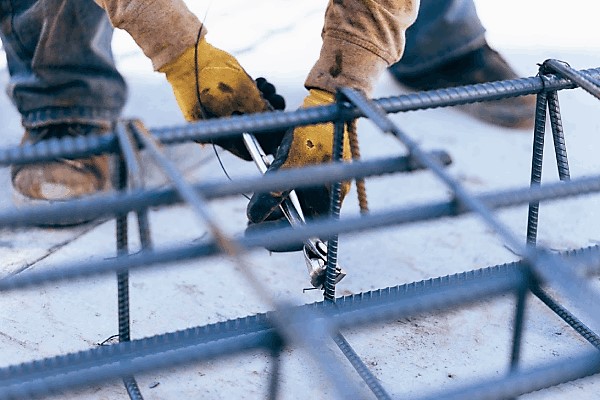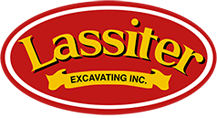How Rebar Reinforces Concrete in Construction

The inclusion of reinforcement bars (‘rebar’) in concrete construction is a method that adds long-term strength to the concrete used to build foundations, walls, pools, pads and other structures. Concrete handles compression well, but without rebar would perform less well under tension or torsion (stretching and twisting). Load-bearing structures like foundations or walls need to handle multiple pressures from lateral and horizontal tension, compression and torsion. Rebar works well with concrete because these materials expand and contract at the same rate when temperatures change.
As with many of our excavating and drilling work assignments, civil engineers calculate the number of reinforcement bars needed in a specific foundation or other concrete structure, along with the shape, size and pattern of the rebar to be installed. The rebar is set in a designed pattern within the concrete to maximize its bonding with the concrete, and its ability to perform.
How Rebar Supports Reinforced Concrete Construction
The reinforcement has multiple roles to perform:
- Primary reinforcement is the rebar needed to ensure that the structure as a whole can support the loads the structural elements and environment will place on it.
- Secondary reinforcement, which is also known as distribution or thermal reinforcement, adds durability and aesthetics: These elements provide enough localized resistance to limit cracking and resist stresses caused by temperature changes and shrinkage.
- Rebar is also employed in specific spots to give resistance to concentrated loads, providing localized resistance and stiffness that spreads the load impact across a wider area.
- Rebar can also hold other steel bars in the correct position to handle their assigned loads.
Rebar can be used to reinforce masonry structures as well, as masonry and grout have similar properties to concrete and also need reinforcement to carry tensile loads. Masonry units like blocks and bricks can be made with voids to accommodate rebar, which is secured in place with grout.
Tools Used for Rebar Installation
The three main operations involved in cutting, bending and tying rebar. The diameter of reinforcement bars used reinforced concrete work can range from 6 to 42mm. As a result, we have a range of shearing, bending and tying equipment to work the material.
The engineering plans provide the crew specific guidance about how the bars need to be installed.
Safety During Rebar Installing
Exposed rebar is hazardous to navigate around. To prevent injury, rebar ends must be covered with plastic caps to prevent impalement.
Pool and Concrete Pad Installation in Northern California
Lassiter Excavating has been installing reinforced concrete structures in the San Francisco Bay Area and Sacramento since 1989. We have a strong track record of working with civil and design engineers to install Piers, concrete pads and other load-bearing structures in residential and commercial properties.
Contact us for more details about our services, and to obtain a free estimate.

